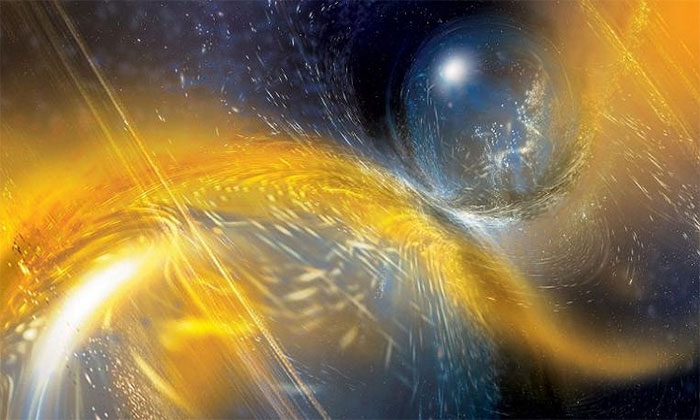The neutron star collision is 520 million light-years from Earth
Astronomers for the second time discovered gravitational waves generated from the intense merger of two neutron stars.
The two neutron stars in the collision were more massive than any known binary star pairs. Because they collide at 520 million light-years away, gravitational waves from the event now reach Earth. Astronomers announced their findings at the 235th annual meeting of the American Astronomical Society in Honolulu on January 6. The results of the study challenge the hypothesis about the process of neutron star pairs forming and merging.

The collision between two super neutron stars creates gravitational waves.(Photo: CNN).
On April 25, 2019, the Laser Interferometric Gravity Observatory (LIGO) in Livingston, Louisiana, received the signal of gravitational waves in the universe. At first, the team didn't know which event produced gravitational waves. They wondered between the three theories that were collisions between neutron stars and black holes, collisions between two super-large neutron stars or three merged black holes.
The first time researchers discovered gravitational waves generated from neutron star collisions was August 2017. It was also the first time gravitational waves, heavy metals such as gold and platinum, were observed during the same event. Because no light signals were detected during the April 2019 collision, the team identified the objects in the event as being extremely massive.
"Through observation, we know there are 17 binary neutron star systems in our galaxy and estimate the mass of these stars," said Ben Farr, a LIGO member at the University of Oregon. "Surprisingly, the total mass of the newly discovered binary is much higher than expected."
Neutron stars are the smallest type of stars in the universe, traces of supernova explosions. Their diameter is equivalent to a city like Chicago or Atlanta, but they are very dense and more massive than the Sun. According to the team, the total mass of the two neutron stars in the collision is 3.4 times more massive than the Sun. Meanwhile, the neutron stars in the Milky Way are only about 2.9 times the size of the Sun.
Researchers do not exclude the possibility that an object in the collision is a black hole. But based on the data, they are convinced that the collision occurred between two unusually large neutron stars. Neutron-star pairs form when two super-massive stars in binary come to the end of their lifecycle. They can also form separately and merge in orbit.
- The discovery of the neutron star collision is 'breakthrough' of 2017
- Discover the source of gravitational waves from neutron stars
- New discovery: Collisions of neutron stars produce heavy elements of strontium
- Detecting unprecedented neutron stars, challenging the physical limit
- Unexpectedly, the most remote, lonely neutron star in the universe
- The collision with the galaxy is 350 million light-years from Earth
- Finding strange stars Neutron is twice as massive as the Sun.
- The galaxy deforms 100 million light-years from Earth
- Video: The crazy dance of Vela neutron stars
- The thousand-star explosion shot gold, silver and platinum throughout the universe
- Thousands of years: Humanity is about to witness the formation of a new star
- What is a Neutron Star?
 Discovered an ancient centipede fossil 99 million years old
Discovered an ancient centipede fossil 99 million years old Discovered bat-like dinosaurs in China
Discovered bat-like dinosaurs in China Discovered a 200-year-old bronze cannon of the coast
Discovered a 200-year-old bronze cannon of the coast Discover 305 million-year-old spider fossils
Discover 305 million-year-old spider fossils